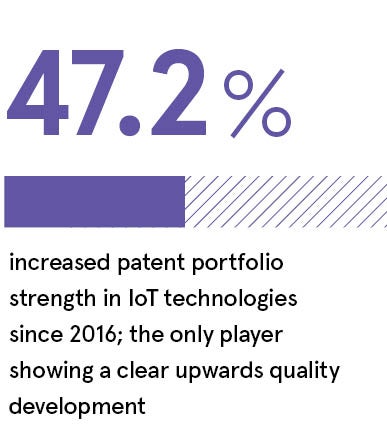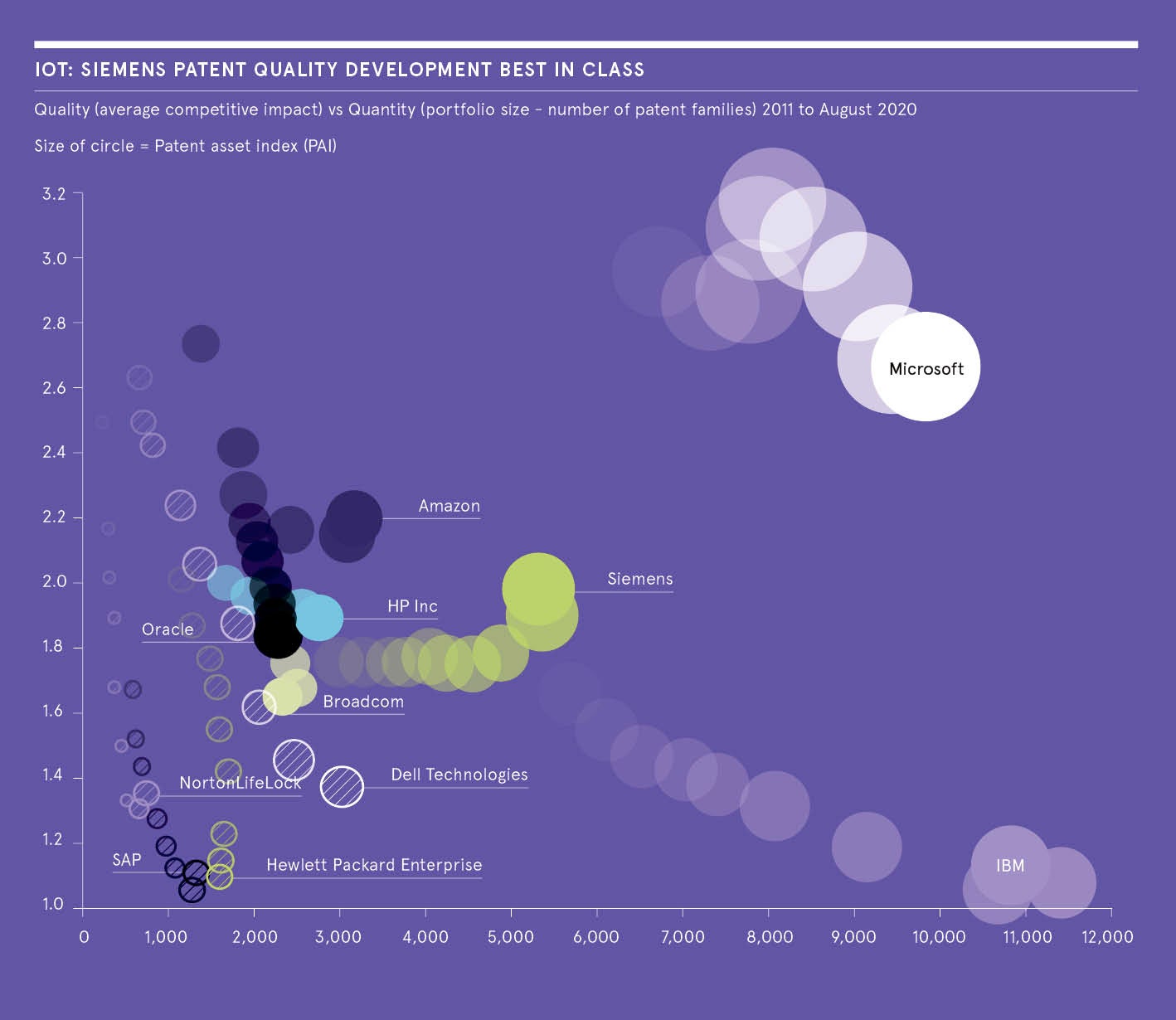
As a world leader in industrial research and development, technology and engineering conglomerate Siemens consistently ranks number one or two in the quantity of patents filed in Europe, currently holding more than 100,000. But a changing intellectual property (IP) landscape has caused it to shift from a quantity-based approach to a highly value-driven strategy.
Historically, large technology companies like Siemens have used patents to establish IP rights and block competitors from benefiting from basic innovations. When Beat Weibel joined the company as chief of IP counsel and group senior vice president, however, he recognised that the digital age was triggering an urgent need to divert from this reliance on simply accumulating patents as quickly as they can be acquired.
“In a digital world, patents are more often used to document a company’s contribution to a digital ecosystem in which businesses create solutions through partnerships and licensing,” says Weibel. Companies can only share and license what they own, so IP rights allow them to protect their competitive advantage and ability to monetise their contributions. “We needed a different approach and understanding of how to create these IP rights,” he adds.
Siemens prior focus on quantity over quality meant inventors would invent first and then call on their IP colleagues to prepare and file patent applications. By not evaluating the quality of the inventions before filing patent applications, the company’s IP group was in reactive mode, with limited knowledge of whether they represented value for the business.
Weibel and his team set out to change this, starting by integrating IP activities in the company’s innovation process. Rather than waiting for inventors to bring good ideas to their patent attorneys, the lawyers were instead sent to talk to the researchers and developers to understand how the innovations they were working on might contribute value to Siemens’ businesses. It took time, but the patent attorneys rose to the challenge.
“It required our patents attorneys to understand our businesses and business models so they could recognise the inventions with the most potential to add value and actively place IP rights on these sweet spots,” says Weibel. The new strategy was successfully implemented, with Siemens’ innovation and IP activities fully aligned behind a value-driven IP strategy and the IP group proactively involved in the organisation’s innovation process.

That was just the beginning, however, as Siemens still required proof that the quality of its patents was improving over time. To determine whether the shift from quantity-based patenting to a more value-driven strategy was ultimately successful, it needed a metric.
“You can only improve what you can measure,” says Weibel. “The best measure of the quality of a patent is going to court, but just 5 per cent of patents ever go. We needed an indirect measure and a tool that would help us measure the quality of each patent and our entire patent portfolio, and track quality changes over time compared to our competitors.”
For this, Siemens turned to PatentSight, a LexisNexis company that provides business intelligence software, analytics tools and insights into the strength, quality and value of patent portfolios.
PatentSight is known for its Patent Asset Index™, an objective measure of global technological strength and innovation. The measure takes into account both the number of patent-protected inventions and their quality, enabling businesses to identify and profile the patent gems that can be leveraged to create value from their innovations.
The Patent Asset Index can calculate the total competitive impact of all patents in a portfolio, patents related to a certain technology or any other group of patents based on selected criteria. Its data quality, recognised as world leading, is powered by a proprietary global patent database, which PatentSight populates with patent data from more than 95 authorities worldwide, including more than 100 million patent documents, 700 million drawings and illustrations, and 100 million PDFs, which can be quickly searched and downloaded.
“PatentSight is quite a good match for Siemens,” says Weibel. “The tool came out of a university and has an academic objective, not just a commercial one. It allows us to track patent quality over time compared to our competition, taking changes such as acquisitions and divestitures into account. And the indices used to measure quality take into consideration differences in markets such as the United States, Germany and China.”
It allows us to track patent quality over time compared to our competition
Siemens’ new IP strategy has supported its ascent in the highly lucrative and competitive internet of things (IoT) market, which analyst firm Gartner valued at $14.7 billion last year. Between 2016 and 2020, Siemens increased its IoT patent portfolio strength in this burgeoning field by 47.2 per cent, the only player in the market that showed a clear average patent quality improvement, as objectively measured by the Patent Asset Index.
Supported by PatentSight and its new value-driven IP strategy, Siemens now realises a better return on investment for its patent portfolios, which are of a higher quality and continually improving. Moreover, patents now play a much larger role in the strategic development of the business. The IP team can now make recommendations on where the company should invest more in research and development to create new opportunities, such as acquiring new customers or joint-venture partners or improving competitive advantage in key regions.

The transformation of IP strategy from a necessary cost to a strategic tool for creating business value and competitive advantage has also caught the attention of the Siemens managing board. After he reported initial results of the change in approach to patents, Weibel is now invited back to present to them once or twice a year.
“It is easy to go into the boardroom and say we’re number one in the number of patents we have,” he says, “but I would rather report on how we can better protect our competitive advantage even in places like China. That makes a bigger difference to the business. I was lucky that the managing board trusted me and the PatentSight tool when I told them we could harvest more valuable inventions and create broader and more important patents by changing our strategy and measuring quality improvement compared to our competitors. Of course, now the board expects to see quality improvement every time.”
For more information on how PatentSight can support your IP strategy, please visit patentsight.com
Promoted by PatentSight

As a world leader in industrial research and development, technology and engineering conglomerate Siemens consistently ranks number one or two in the quantity of patents filed in Europe, currently holding more than 100,000. But a changing intellectual property (IP) landscape has caused it to shift from a quantity-based approach to a highly value-driven strategy.
Historically, large technology companies like Siemens have used patents to establish IP rights and block competitors from benefiting from basic innovations. When Beat Weibel joined the company as chief of IP counsel and group senior vice president, however, he recognised that the digital age was triggering an urgent need to divert from this reliance on simply accumulating patents as quickly as they can be acquired.
“In a digital world, patents are more often used to document a company’s contribution to a digital ecosystem in which businesses create solutions through partnerships and licensing,” says Weibel. Companies can only share and license what they own, so IP rights allow them to protect their competitive advantage and ability to monetise their contributions. “We needed a different approach and understanding of how to create these IP rights,” he adds.

